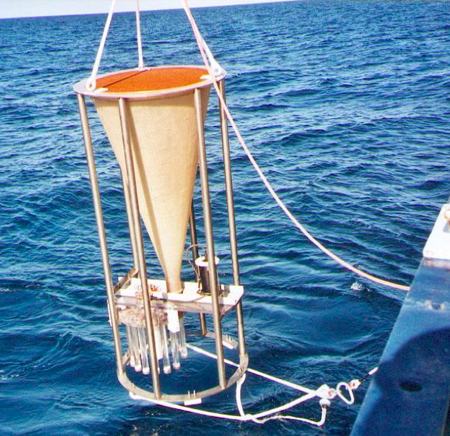Some of the carbon, like the black soot and charcoal residue of fires, that finds its way into Earth's oceans stays there for thousands for years, and some of the black carbon breaks away and hitches a ride to the ocean floor on passing particles.
Virtually all black carbon results from combustion. Soot, the airborne version of black carbon, is a key element of smoke. Charcoal is another form of black carbon. Each form is produced naturally by wildfires, as well by industry and other human activities.
Scientific interest in black carbon has become high. Though once ignored in climate models that solely had interest in CO2, a comprehensive 2013 study found that soot is a far more important player in global climate than was previously believed. And there is a growing global movement among gardeners and some farmers to use black carbon - biochar - to both boost crop yields and to counter greenhouse emissions by locking carbon in soil for centuries.
The researchers didn't want to to answer questions about how much black carbon people are producing today or how human-produced black carbon is affecting global climate, they just wanted to know where it's going.

Sediment traps, like this one being deployed from the research vessel New Horizon, were used to sample black carbon in particles that sank to the bottom of the Northeast Pacific. Credit: E. Druffel/UC Irvine
"Our previous work showed that the black carbon in ocean sediments is ancient," said lead investigator Ellen Druffel, the Fred Kavli Professor of Earth System Science at UC Irvine. "It's anywhere from 2,000 to 5,500 years older than the organic carbon in the same sediments. That means that it either stays dissolved in the water for a long time before it's deposited or it stays trapped somewhere else -- like the soil -- for thousands of years before it enters the ocean. This new study offers the most complete picture yet of how black carbon finds its way into deep ocean sediments."
"The environmental fate of black carbon is not well-understood," said study co-author Caroline Masiello, a Rice biogeochemist who began studying black carbon with Druffel in the 1990s. "It's extraordinarily stable, and though we don't fully understand how nature breaks it down and recycles it into the deep Earth, we know that it must because otherwise we would be knee-deep in it.
"Whether you come at this from the point of view of reducing soot in the atmosphere or of using biochar to counter global warming, it's important to have a better understanding of where black carbon goes, how it gets there and how much of it breaks down along the way. "One of the important things about this study is that we were able to classify the kinds and types of black carbon found in seafloor sediments. This helps us narrow down the role of the ocean as a sink for both soot and charcoal."
Black carbon's journey to the bottom of the ocean begins when the material enters the water. Airborne soot gets into the ocean via rainfall and runoff from streams. Though charcoal residue can stay trapped in soils for thousands of years, runoff and erosion eventually carry some of it to the ocean as well.
The researchers used radiocarbon dating and other techniques to examine the black carbon that was buried in seafloor sediments in the Northeast Pacific that dated to about 20,000 years ago. The study's lead author, graduate student Alysha Coppola of UC Irvine, also conducted an extensive chemical analysis of the types and amounts of black carbon that were dissolved in seawater, trapped in sediments and contained in ocean-going particles, tiny specs of matter that gradually sink to the seafloor.
"We found that black carbon is taken up by particles that are produced in the water column," said Coppola. "One example would be fecal pellets that are excreted by organisms. Another is a sticky 'marine snow' that falls slowly downward to the bottom and gets buried in sediments."
Coppola said black carbon tends to stay dissolved in seawater, and only occasionally gets snagged by a passing marine particle.
"I'm surprised that given how much black carbon is produced, most of it remains in the ocean for thousands of years," Coppola said. "It's very interesting that only a relatively small amount with a certain type of chemistry is removed to the ocean floor."





Comments